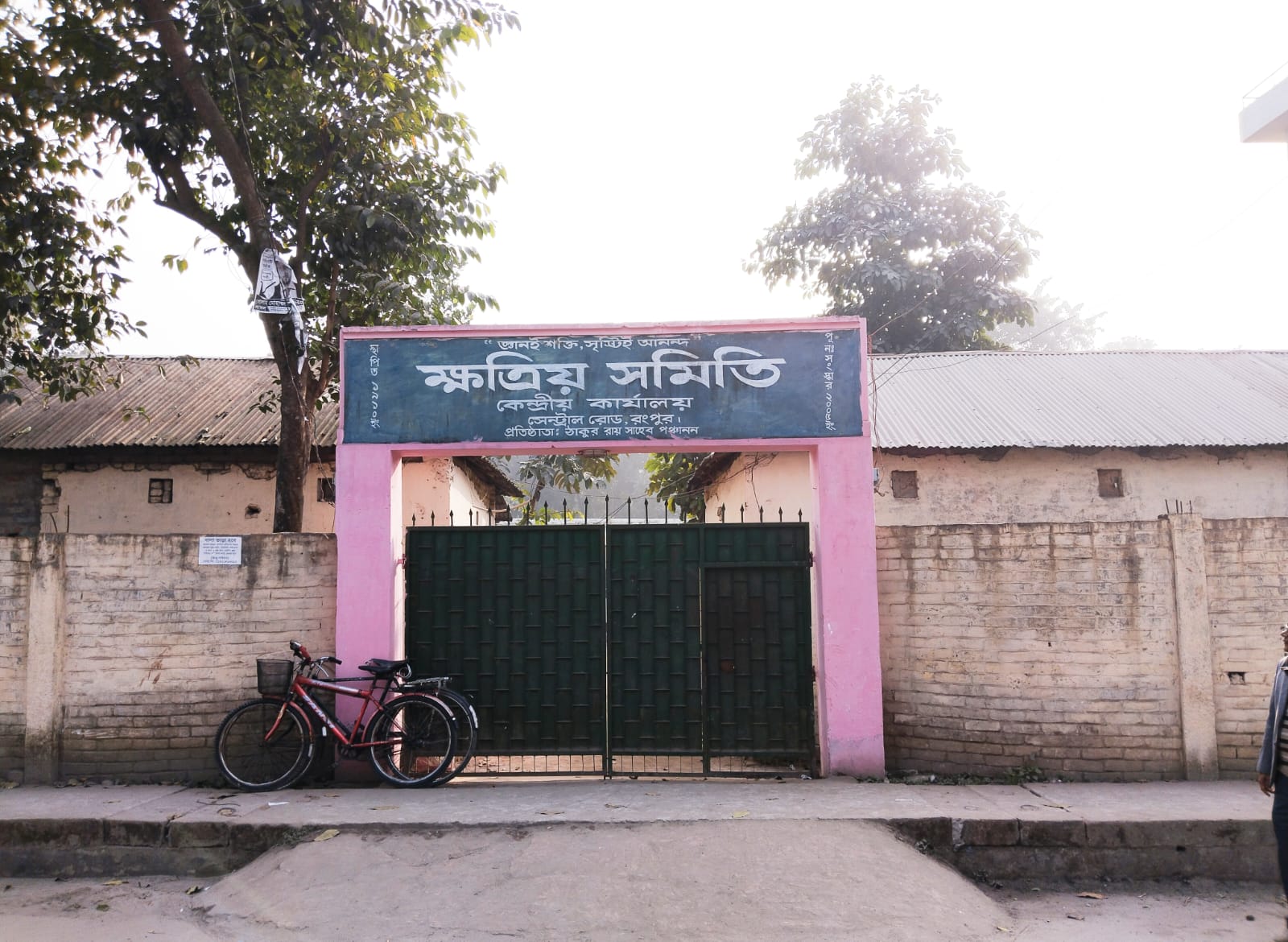
The Kshatriya Samiti in Rangpur, Bangladesh, was a significant social and political organization established to uplift the Rajbanshi community, which had faced social and economic marginalization. The history of this organization is closely linked with the efforts of Panchanan Barma, who spearheaded the movement for the recognition and empowerment of the Rajbanshi people. Here are the key historical aspects of the Kshatriya Samiti:
Founding and Objectives
Establishment: The Kshatriya Samiti was founded by Panchanan Barma on the 18th of Jaishtha in the Bengali year 1317 (circa May 1910) in the Rangpur district, which is now part of Bangladesh.
Objectives: The primary goal of the Kshatriya Samiti was to promote the social, economic, and political interests of the Rajbanshi community. This included:
Educational Advancement: Encouraging education among the Rajbanshis to improve their socio-economic status.
Cultural Revival: Reviving the cultural heritage and traditions of the Rajbanshis, which had been undermined by centuries of marginalization.
Social Reform: Addressing issues such as untouchability and social discrimination, and promoting unity and solidarity within the community.
Key Activities
Educational Initiatives: The Samiti established several educational institutions and hostels to provide better educational opportunities for Rajbanshi students. The Kshatriya Hostel at Rangpur Zilla School was one of the significant initiatives.
Economic Support: To assist the economically disadvantaged members of the community, the Kshatriya Samiti founded the Kshatriya Bank in Kurigram. This institution aimed to provide financial support and promote economic self-sufficiency among the Rajbanshis.
Cultural and Social Programs: The Samiti organized cultural events, ceremonies, and awareness programs to instill a sense of pride and identity among the Rajbanshis. These programs also aimed to revive and preserve their traditional customs and practices.
Publication of Kshatriya Patrika: The Kshatriya Samiti published a journal named Kshatriya Patrika to disseminate information, raise awareness, and promote the objectives of the organization. This publication played a crucial role in mobilizing the community and spreading the message of social reform.
Kshatriya Movement
Mass Initiation Ceremony: One of the most notable activities of the Kshatriya Samiti was the mass initiation ceremony held in Debiganj, Panchagarh, on the 27th of Magh in the Bengali year 1319. During this event, over a lakh of Rajbanshis were formally initiated into the Kshatriya varna. This ceremony was a symbolic assertion of their Kshatriya identity and aimed to challenge the social hierarchy that had marginalized them.
Advocacy and Political Engagement: Panchanan Barma and the Kshatriya Samiti were actively involved in advocating for the rights of the Rajbanshi community. Their efforts led to increased political representation and participation of Rajbanshis in local and regional governance.
Legacy and Impact
Social Upliftment: The Kshatriya Samiti played a crucial role in the social upliftment of the Rajbanshi community. It helped in raising their socio-economic status and instilling a sense of identity and pride among them.
Political Empowerment: The activities of the Kshatriya Samiti led to greater political awareness and participation among the Rajbanshis. This contributed to their increased representation in political and administrative bodies.
Cultural Revival: The Samiti’s efforts in reviving the cultural heritage of the Rajbanshis helped in preserving their traditions and customs, which were at risk of being lost due to social marginalization.
The Kshatriya Samiti in Rangpur, Bangladesh, remains a significant chapter in the history of the Rajbanshi community’s struggle for recognition, rights, and social justice. Its legacy continues to inspire efforts for social and cultural revival among marginalized communities in the region.
